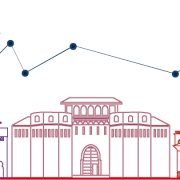In the current digital age, risk and compliance are rapidly evolving and organizations are continuously striving to meet the demands of managing a wide range of new risks. Organizations have to deal with an ever-increasing variety of risks, from vendor management to business continuity, through to auditing, policy, and regulatory compliance, to name a few. Typically, these risks are handled individually, creating a siloed environment with little to no cross-enterprise visibility.
Every industry has compliance programs to meet specific external regulations, best practices, and internal policy objectives. Furthermore, each organization within the industry will have its own approach to compliance needs, there is no ‘one-size-fits-all’. The approach and needs of banks & financial institutions will be different for healthcare organizations. Similarly, manufacturing entities will have different needs to businesses operating in the education sector. A fit-for-purpose program should be able to accommodate different business requirements.
Additionally, most organizations are typically managed along departmental lines and each of these departments such as HR, Finance, or IT will have a different approach to their compliance process. Whilst, each department is tasked to meet the same overarching organizational compliance requirement they may use different taxonomies and systems. Most will rely on excel spreadsheets, share point, or point solutions at best.
The key issues with such an approach are:
- Risk and compliance management is disjointed, cumbersome and people-intensive
- Data duplication – same data is input manually again and again leading to loss of data integrity and degradation
- Data access is not secure, segregated and lacks an audit trail
- Findings, incidents, and tasks are not monitored and are likely to fall through the gaps
- Lack of a repeatable process and little visibility on risk trends
- Information is not readily available to enable management to take informed risk-based decisions
- Errors can compound the risks posed to the business due to a lack of knowledge of interdependencies
The siloed fragmented approach described above is resource intensive and inefficient. Performing risk assessments on an ad hoc basis using rudimentary tools requires enormous effort, leads to errors often compounding risks, and provides very little visibility across the organization. It is also surprisingly common to see how prevalent this approach is today, especially in large and heavily regulated organizations such as banks and financial services organizations.
Enterprise risk management (ERM) is a more comprehensive approach that seeks to identify and manage risks at the enterprise level determining connections and inter-dependencies. Forward-looking proactive entities that are further down the risk maturity journey will have an ERM approach to risk and compliance.
The ERM framework looks at risk and compliance holistically to establish a common approach with standardized methods and taxonomy for use across the organization, while at the same time supporting the unique needs of each department. ERM will enable and enhance consistency and collaboration between departments providing increased visibility and identifying risk inter-dependencies that may otherwise be missed.
Benefits of an enterprise risk management framework:
- A unified and systematic approach to risk and compliance across the organization
- Common data models, architecture, and taxonomy help enhance and strengthen the risk posture of the enterprise as a whole
- Stronger reporting and controls across the organization to help satisfy regulators
- Build resilience by strengthening operating decisions when the risk function is included in product or service design for instance
- Establish repeatable processes and common approaches to risk across the organization
Automation is a huge enabler for any enterprise risk management program as it facilitates compliance to be centrally coordinated and at the same time, it is managed in a more autonomous manner at the business process or unit level.
Benefits of enterprise risk management supported by automation:
- Data is entered once and can be used repeatedly across the organization
- There is no loss of data integrity or data degradation as the same data is not input manually time and again
- Technology makes collaborating and sharing compliance information easier and more seamless
- Risk assessments can be performed once with data available to different business processes or units a vendor risk assessment is performed once and the information can be used by IT to assess security risk and by Business Continuity to assess loss of product or service risk
- Access to data can be segregated to comply with regulations and internal policies with a full audit trail and integration to identity and access management tools
- Findings, incidents, and tasks can be monitored and tracked without the risk of falling through the gaps
- Information is readily available at any time to enable senior executives and risk owners to take timely risk-based decisions
ERM enhances the risk and compliance function by codifying and establishing a common approach and taxonomy. Automation further enhances the enterprise risk management process by securing access to data, ensuring data integrity, allowing repeatable use of data, tracking gaps and tasks, and making information readily available for risk-based decision-making.
Blog Author: Depeche Elliot, SIRM, COO – Co-Founder, Maclear Global














